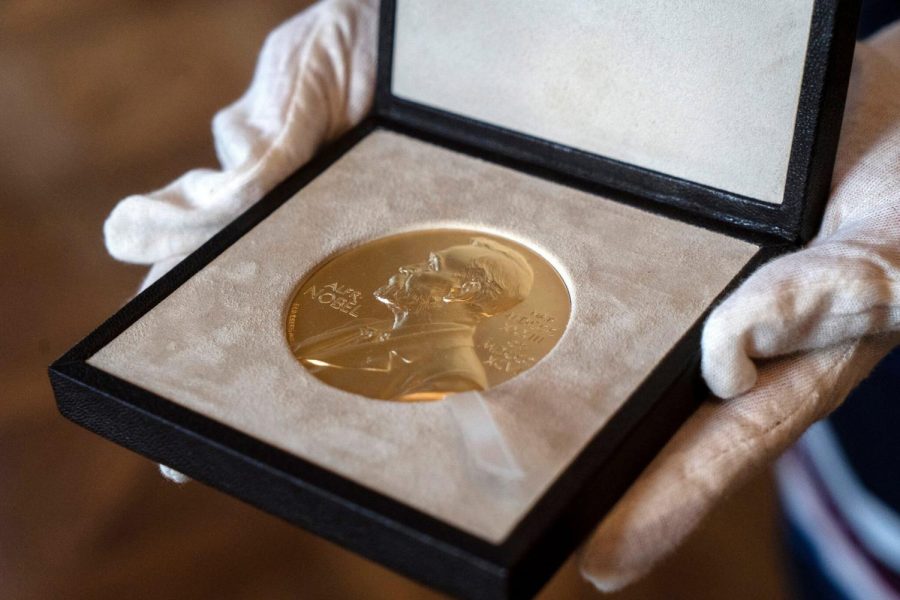The 2022 Nobel Prize goes to…
Every October, the Sweden and Norway committee names six winners of prizes in a variety of categories, including physiology or medicine, physics, chemistry, economic science, literature, and peace work.
According to Alfred Nobel’s will, the prizes are awarded to “those who, during the preceding year, have conferred the greatest benefit to humankind.” Recipients of the Nobel Prizes, or laureates, receive a medal, diploma, and prize of 10 million Swedish krona, or $900,000.
Physiology & Medicine: Svante Pääbo
The physiology and medicine prize, the first announced, went to Swedish geneticist Svante Pääbo. His work focused on the genomes of ancient hominins. By examining genetic material from 40,000 year old bones, Dr. Pääbo has tracked genetic distinctions amongst modern humans and the impact of such genes on diseases, such as COVID-19. Dr. Pääbo discovered that modern humans who inherited Neanderthal DNA brought more severe symptoms for people who had COVID-19.
Physics: Alain Aspect, John F. Clauser and Anton Zeilinger
The physics prize was awarded to Alain Aspect, John F. Clauser, and Anton Zeilinger for their discoveries on quantum entanglement—a phenomenon when two particles act like one. Aspect, Clauser, and Zelinger proved theories of quantum mechanics that Einstein had once deemed impossible. The scientists also utilized entangled photons to send encrypted videos and messages that alert receivers of any eavesdropping.
Chemistry: Carolyn R. Bertozzi, Morten Meldal, and K. Barry Sharpless
Carolyn R. Bertozzi, Morten Meldal, and K. Barry Sharpless were awarded the prize in chemistry for harnessing the power of molecular interaction and developing the study on how molecules link together.
In 2001, Dr. Sharpless wrote about “click chemistry,” a new method used when creating drug compounds. After discovering copper catalyzed azide-alkyne cycloaddition, chemists made the reaction efficient and stable. These three chemists have “[revolutionized] how chemists think about linking molecules together,” said the Nobel committee.
Literature: Annie Ernaux
Annie Ernaux, female French writer, received the literature award for works that “uncovered the roots, estrangements and collective restraints of personal memory” as described by Mats Malm, permanent secretary of the Swedish Academy. Ernaux’s body of work is intensely personal covering unwanted pregnancy, abortion, love affairs, marriage, and motherhood. Ernaux describes her own writing as a political act that shows stark social inequalities.
Economic Science: Ben S. Bernanke, Douglas W. Diamond, and Philip H. Dybvig
The prize for economic science was given to American economists Ben S. Bernanke, Douglas W. Diamond and Philip H. Dybvig for their research into financial crises and why avoiding bank collapses is vital. They also explained how banks play an extremely important role in society and allow societies to create a productive economy.
Peace: Memorial in Russia, Center for Civil Liberties in Ukraine, and Ales Bialiatski
The Nobel Peace Prize was collectively awarded to the Russian civil rights group Memorial, the Center for Civil Liberties in Ukraine, and Ales Bialiatski in Belarus for human rights advocacy throughout the Russo-Ukrainian conflict. Collectively, they challenged Putin by disproving harmful myths and helped Ukrainian citizens survive. Berit Reiss Andersen, chair of the Norwegian Nobel Committee said, “[t]hey have for many years promoted the right to criticize power and protect the fundamental rights of citizens.”

Eric is the Editor-in-Chief of Tiger Times. He loves to stargaze, log his culinary adventures on “Foodhole,” and play epic movie soundtracks on his...

